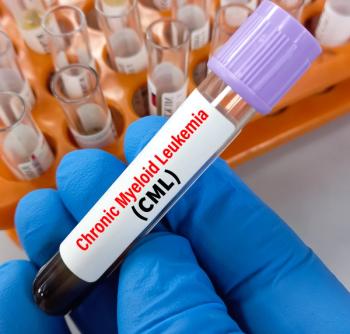
- October 2016 Diabetes
- Volume 82
- Issue 10
Diabetes Devices: Helping Patients Find a Good Fit
With a diagnosis of diabetes comes suggested dietary changes and new medications, which, in addition to the array of available diabetes devices, can make patients feel overwhelmed.
With a diagnosis of diabetes comes suggested dietary changes and new medications, which, in addition to the array of available diabetes devices, can make patients feel overwhelmed. Pharmacists are perfectly positioned to help these patients select a monitoring device that is best suited to their lifestyle. Whether patients need a standard blood glucose meter, a continuous blood glucose meter, or an insulin pump, pharmacists can guide them to the devices that are right for them.
STANDARD BLOOD GLUCOSE METERS
The glucose meter is the main device patients with diabetes have for ensuring that their blood glucose level is under control.1 Several factors should be considered when selecting an appropriate meter, not the least of which is the cost of the meter and the test strips. Most health insurance plans have at least 1 basic meter on their formulary. However, although a basic meter may suffice for some patients, it may not fit the lifestyle of other patients.
The age of a patient can influence the choice of meter. For an elderly patient, the size of the meter may be important, as patients with arthritis or dexterity issues might require widely spaced buttons. Older patients may also appreciate a large display screen and/or a meter that provides audio cues due to visual impairment. Elderly patients with dexterity or vision issues may appreciate no-coding test strips and rechargeable batteries, as well. Children, on the other hand, may find the sight of blood disturbing and appreciate a meter that uses a small sample size. Nighttime testing is often required in children, so a meter with a backlight and a port light might be useful, too.
Some meters come with apps that offer care coordination, allowing patients to communicate by voice, e-mail, or video conference with their diabetes coach or educator. This is a good option for patients who have many questions and do not have regular access to a health care provider.
For patients working with a diabetes coach or educator, meters that can store and transmit data to a computer, especially wirelessly, are ideal. This allows review of blood glucose levels by health care providers, coaches, and educators. Meters with Bluetooth can send information directly to a provider’s e-mail or an insulin pump. For patients who require multiple daily insulin injections, a meter with a bolus calculator can be helpful. This calculator helps patients determine how much insulin they need at any time, while accounting for the amount of insulin already in the body.
CONTINUOUS GLUCOSE METERS
Continuous blood glucose meters are available by prescription. Although these meters are not quite as accurate as, and are more expensive than, traditional blood glucose meters, they may provide better glucose control by delivering real-time glucose measurements at 5- or 1-minute intervals.2
These meters measure the blood glucose level in the tissue through a miniature sensor inserted under the skin. The sensor transmits data to the meter through radio waves and must be replaced every few days, or weekly, to remain accurate. These devices need to be individually programmed by checking blood samples with a glucose meter.2 Users can set alarms to indicate when their glucose levels are too high or too low. Software is available to transfer data from the monitor to a computer in order to track trends and analyze patterns.2
INSULIN PUMPS
Just as diabetes affects each patient differently, diabetes devices are not one-size-fits-all, especially insulin pumps. Insulin pumps are small computerized devices that deliver basal and bolus insulin. This delivery system most closely simulates the body’s natural release of insulin. Every pump has common core features that serve users well, and the several pumps on the market can accommodate personal preferences.
Pumps can deliver insulin through either a pod attached directly to the skin or tubing connected to the pump on one end and a needle or cannula inserted into the body on the other. The pod-type pump has several advantages: there is no tube to become tangled or to be primed with insulin, which reduces waste, and insulin delivery is not disturbed by the movement of tubing. However, the pod-type pump requires a remote control, and issues regarding the skin or insertion site require complete pod replacement.
Today’s insulin pumps are small, discrete, and user-friendly. They can be worn, unseen, under clothing. Pumps with a remote control offer the most discretion, and many pumps come in various colors with stylish cases. Some pumps even come with a waterproof exterior for patients who spend a lot of time on or in the water. Reservoir volume is another important consideration when choosing an insulin pump. The reservoir should hold about 3 days’ worth of insulin. For patients using less than 60 units of insulin per day, reservoir volume is not an issue; however, patients using more than 60 units per day should look for a pump that holds at least 300 units. This can get a patient through at least 3 days, including insulin lost from priming the tubing.
Most pumps allow flexible dosing through programmable profiles so that users can vary the amount of insulin received throughout the day. For example, users can set a lower rate for nighttime or a higher rate for the dawn phenomenon or days of illness.
Some monitors permit continuous glucose monitor integration by displaying sensor data on the pump screen, thereby eliminating the need to carry a separate monitor. Other pumps accept transmissions from meters, thus eradicating the need to manually enter these values.
THE ARTIFICIAL PANCREAS
Recent technological advances have brought us very close to an artificial pancreas. The components required for an artificial pancreas are (1) a continuous blood glucose monitoring system, (2) an insulin delivery system, and (3) a computer program that can link the first 2 components to adjust insulin delivery based on the real-time glucose level. We have the first 2 components, and the third is not far away.3
Dr. Kenny earned her doctoral degree from the University of Colorado Health Sciences Center. She has 20+ years’ experience as a community pharmacist and works as a clinical medical writer in Colorado Springs, Colorado. Dr. Kenny is also the Colorado education director for the Rocky Mountain Chapter of the American Medical Writers Association.
References
- Blood glucose monitoring devices. FDA website. www.fda.gov/medicaldevices/productsandmedicalprocedures/InVitroDiagnostics/GlucoseTestingDevices/default.htm. Updated January 16, 2015. Accessed March 15, 2016.
- Continuous glucose monitoring. National Institute of Diabetes and Digestive and Kidney Diseases website. niddk.nih.gov/health-information/health-topics/Diabetes/continuous-glucose-monitoring/Pages/index.aspx. Accessed March 15, 2016.
- The artificial pancreas. diaTribe website. diatribe.org/artificialpancreas. Accessed March 15, 2016.
Articles in this issue
about 9 years ago
Can You Read These Rxs? (October 2016)about 9 years ago
Case Studies (October 2016)about 9 years ago
Pet Peeves (October 2016)about 9 years ago
Generic Product News (October 2016)about 9 years ago
Change Together for the Betterabout 9 years ago
Educational Pharmacogenetics Resources for Pharmacistsabout 9 years ago
Diabetes Prevalence Has Nearly Quadrupled Since 1980about 9 years ago
Metformin Still Underused in Patients with Type 2 DiabetesNewsletter
Stay informed on drug updates, treatment guidelines, and pharmacy practice trends—subscribe to Pharmacy Times for weekly clinical insights.























































































































































































































